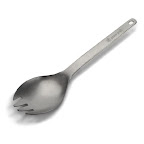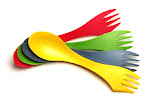 On a lighter note, one of my colleagues is known for not being fussy with his surgical instruments. As a surgical registrar, often you are subject to the vagaries of available equipment at your hospital. In many cases the instruments you want or prefer may have just been put into the steriliser (and thus unavailable for the next four hours), or in use in another theatre, or not on your scrub nurse's tray, or dropped on the floor, or just plain don't exist.
On a lighter note, one of my colleagues is known for not being fussy with his surgical instruments. As a surgical registrar, often you are subject to the vagaries of available equipment at your hospital. In many cases the instruments you want or prefer may have just been put into the steriliser (and thus unavailable for the next four hours), or in use in another theatre, or not on your scrub nurse's tray, or dropped on the floor, or just plain don't exist.One learns to be versatile, and a pair of forceps becomes a blunt dissection tool, a retractor, and a needle holder. A pair of artery forceps (or, as those surgeons on the other side of the pond call them, "hemostats") becomes a towel clip, a retractor, a blunt dissector, a temporary replacement for dressing tape, and many other uses that only become obvious at the time.
In any case, this colleague was known for saying (when asked, "What instruments will you need?") "A knife, fork and spoon please."
Lo and behold, one day he was handed a sterilised kitchen cutlery set. The nurses were kind enough to open some real surgical instruments after they had finished laughing at their joke.
 Having said that, though, a spoon actually does a pretty good job of removing thrombus from the inside of aortic aneurysms.
Having said that, though, a spoon actually does a pretty good job of removing thrombus from the inside of aortic aneurysms.On the subject of spoons, this article recently came to my attention. I can only say that epidemiologists have a lot of time on their hands.





2 comments:
Ah, the spork.
I assisted on an operation (hydatid cyst excision) recently where a spoon was requested. A sterile tablespoon was duly produced. Several attempts to remove the subcysts with this were performed, after which a teaspoon was requested. Unfortunately they didn't have one )-:
Post a Comment